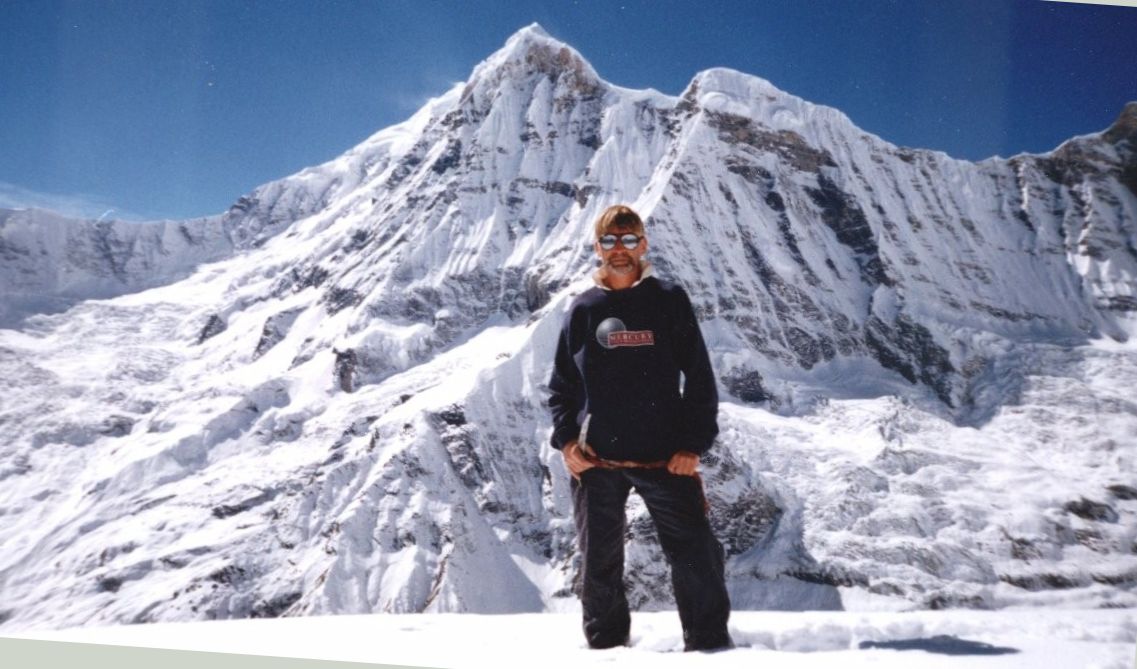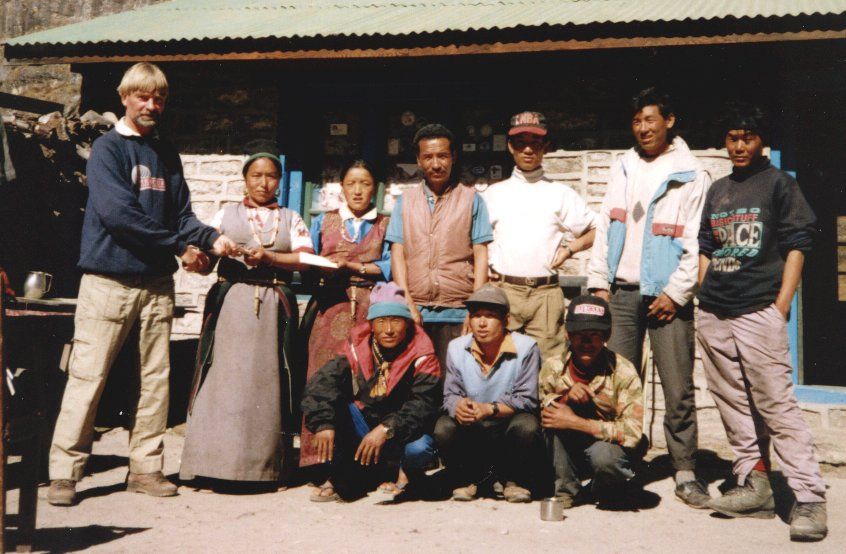

 In the Nepal Himalayas
|
|
When former college lecturer Alan Ingram took early retirement from Bell College in Hamilton, his colleagues could have been forgiven for expecting him to potter around his garden.
Few would have guessed Alan would end up helping to build village schools 10,000 feet up in the Nepalese Himalayas.
However for 12 years the senior lecturer in computing spearheaded a mercy mission to help some of the wor1d’s poorest people help themselves.
Life and Death:
Alan, from Bearsden in Glasgow ran a one-man charity which helped build, repair and equip schools and medical centres throughout Nepal.
In a land where life expectancy was just 50 and infant mortality stood at one in 10, such facilities can often, literally, mean the difference between life and death.
Since 1987, Alan became a familiar figure in the remote villages on the slopes of Mount Everest and other high ranges
distributing money donated in Bearsden to local teachers, doctors and village leaders.
The money was raised in slide shows and talks, from friends and local businesses.
Alan paid his own travel and trekking expenses so every penny raised was spent on projects in Nepal.
 Making a
donation to school in Langtang Valley
|
|
Holiday:
In one year alone, 13 schools and centres received donations - ranging from a dental clinic for Sherpas to a rescue centre in the capital, Kathmandu.
Alan first arrived in Nepal through Ramblers travel agency and his mercy mission began almost by accident.
“When I first went out to Nepal, I was like any other tourist - captivated by the scenery,” he says.
“I had climbed all the Scottish Munros, climbed Europe’s highest mountain, Mont Blanc, three times and also the dreaded Eiger.
“Nepal and Everest were the ultimate challenge, so I had decided to spend a few weeks trekking.”
Away from comfy hotels and shopping centres, Alan found himself in a medieval world.
Off the beaten track, he came across poverty as breathtaking as the mountain ranges.
“Nothing in Scotland, however bad, can prepare you for the hardships you see in Nepal.
“Healthcare is minimal and, while most villages have a school, they are usually flimsy structures knocked together with wood from the forests and bare earth floors.
"In some remote areas, villagers had never before seen a Western visitor yet the friendship and hospitality was amazing. Nothing was too much trouble."
Back in Bearsden, Alan resolved to return and help them.
Through slide shows, talks and personal contacts, he raised several hundred pounds and each year since made a two or three month visit to Nepal.
From the start he was espécially determined to set up schools.
“I was amazed at how keen Nepalese children were to study, but they often lacked even the most basic equipment.”
Alan was affectionaly known as “dai”, which means big brother, although also latterly “badgi”, or grandfather.
“Anyone over 40 in Nepal is considered old, so I suppose I must have been considered ancient,” he laughs.
Alan had a couple of hair- raising moments.
Snow storm:
“One day we met 30 people on a Japanese expedition travelling on the same route as us, but they set off early and I waved them off.
“That night there was a major snow storm. Three metres fell in 36 hours and the Japanese were all killed in an avalanche.
“Another time I had just donated money to a village and was asleep in my tent. Suddenly a knife slashed through the tent and a hand grabbed my bag. “I got up in a flash and the thief ran off with most of my clothes including an expensive Goretex jacket.”
Nepalese villagers were unable to grasp the concept of city life, so Alan told them the money came from his village called Glasgow. “I tell them about life here, from the architecture to Rab C. Nesbitt.
“In one little Himalayan school there was a picture of George Square on the wall, alongside postcards of the West Highland Way".
Alan insists he was only a messenger. “I distributed money raised by others,” he says. “They are the ones who deserve praise.”
The Sunday Post: 24th January 1999